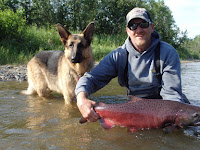
Bass Fishing Fundamentals: Get Started Today
Jumat, 03 Maret 2023
Add Comment
bass fishing basics,
bass fishing basics for beginners,
bass fishing basics video,
bass fishing essentials,
bass fishing fundamentals,
bass fishing setup for beginners
Edit
Bass fishing is a multibillion-dollar business in the US, with competitive bass fishing alone generating about two billion dollars per yea...
Read More


















